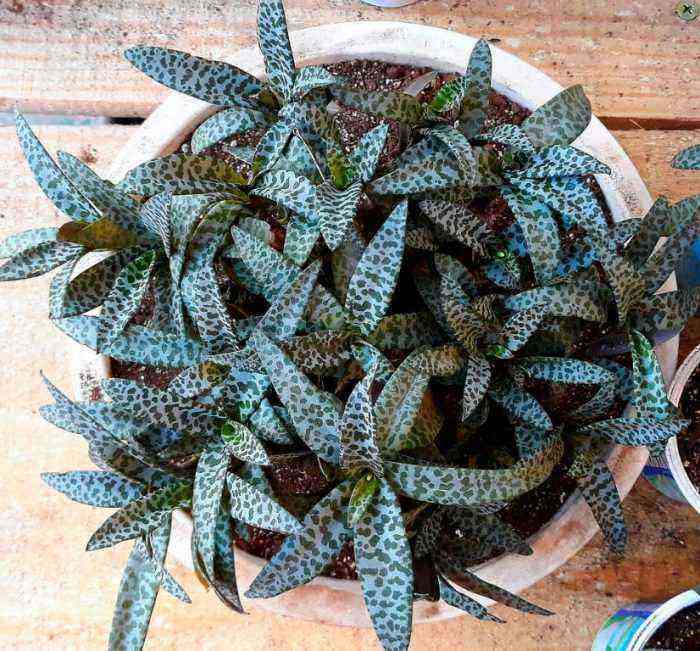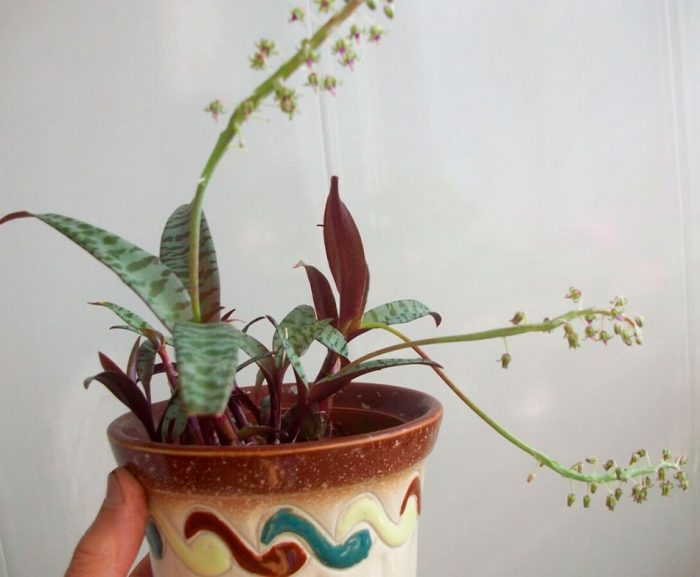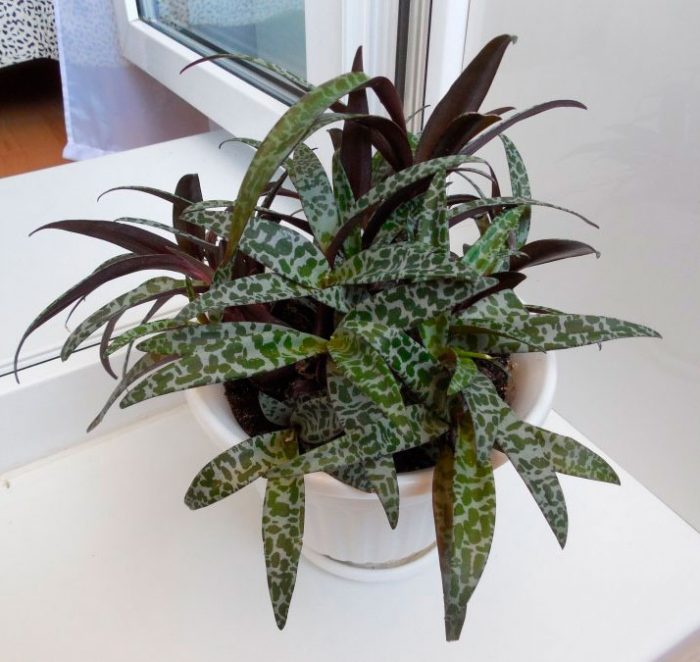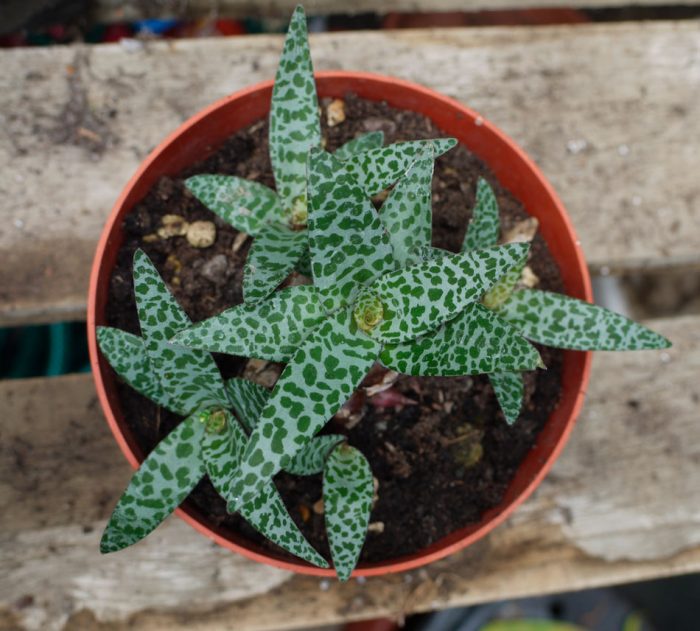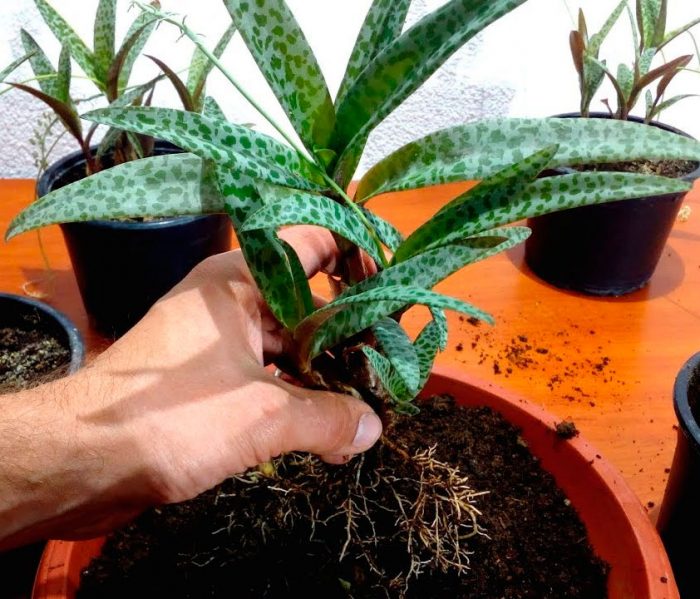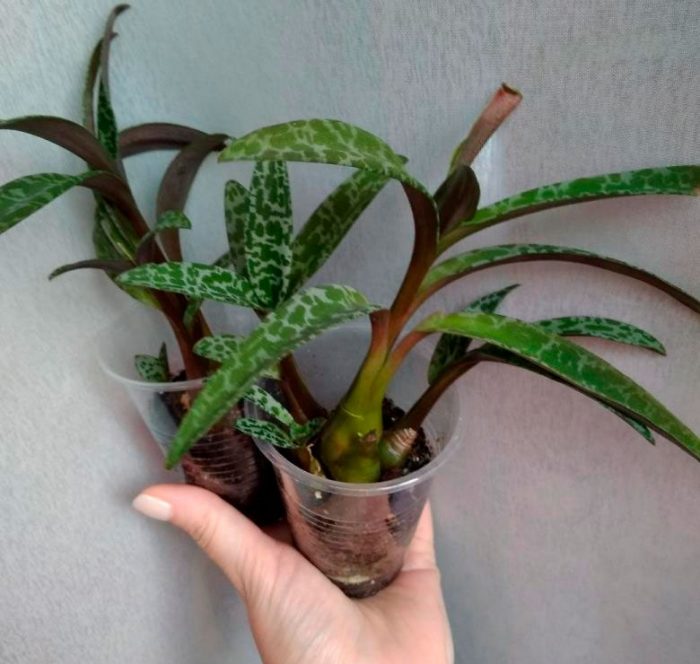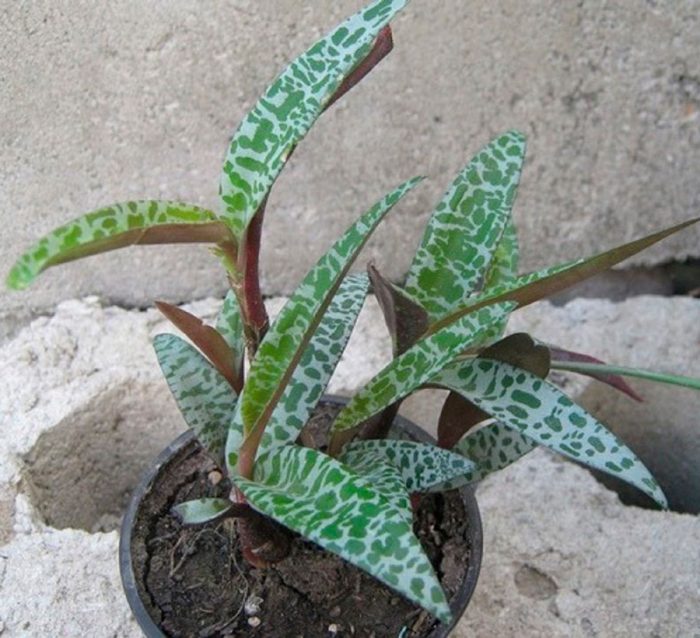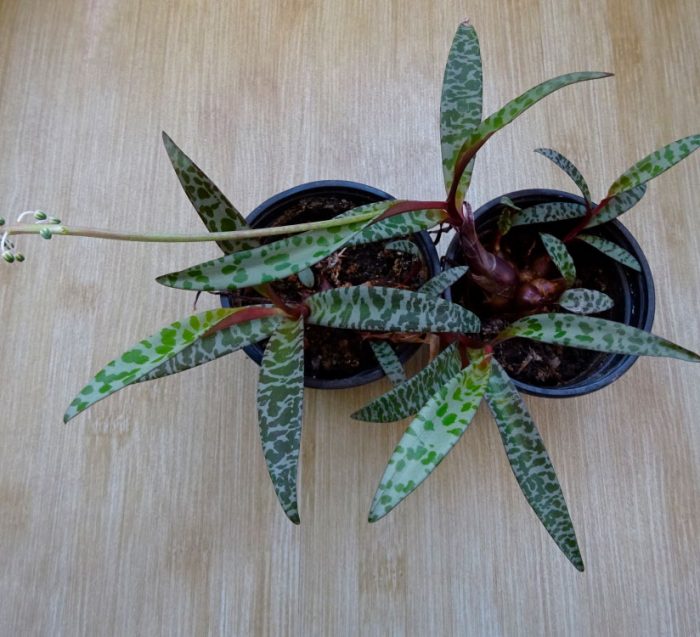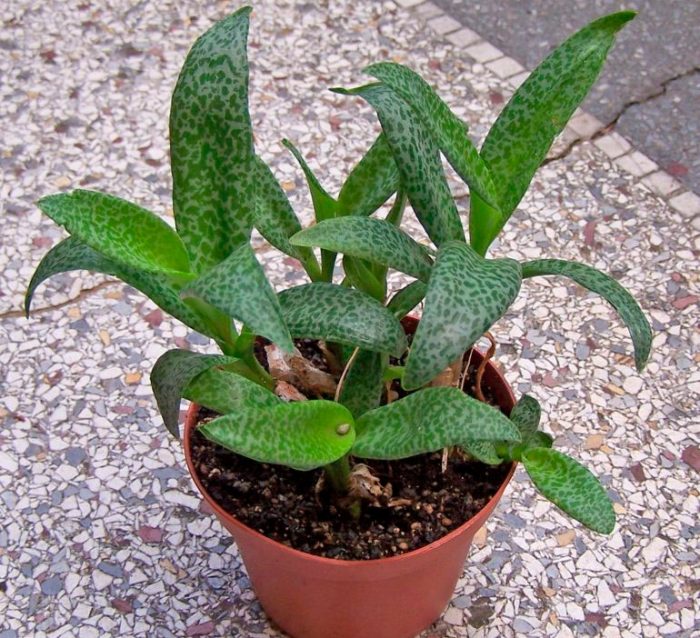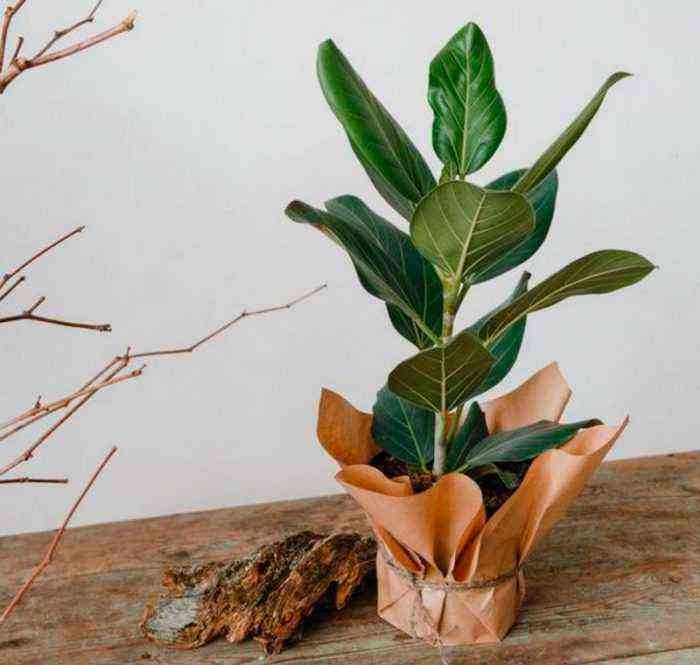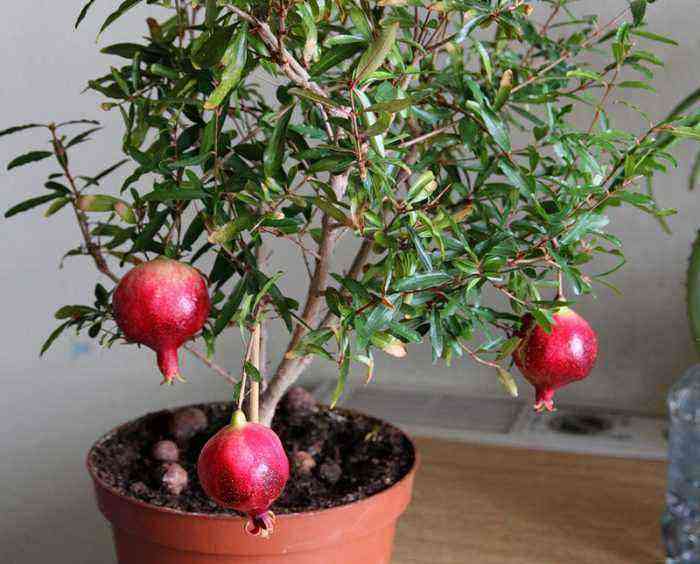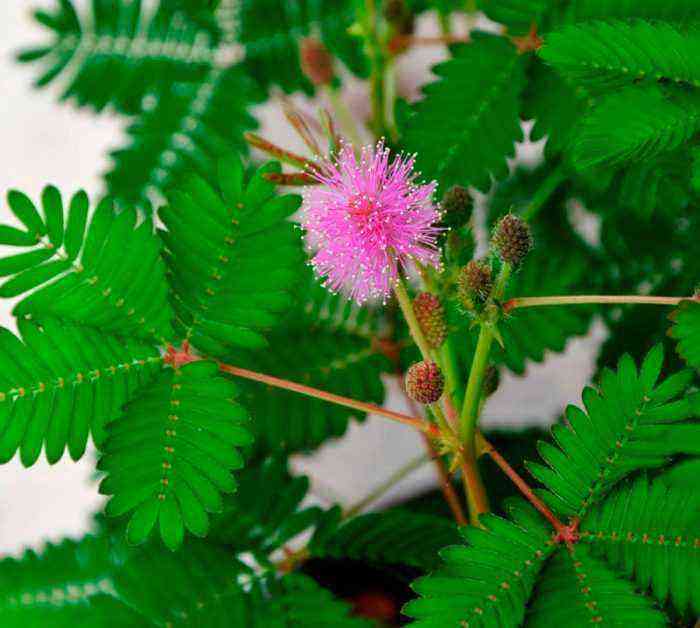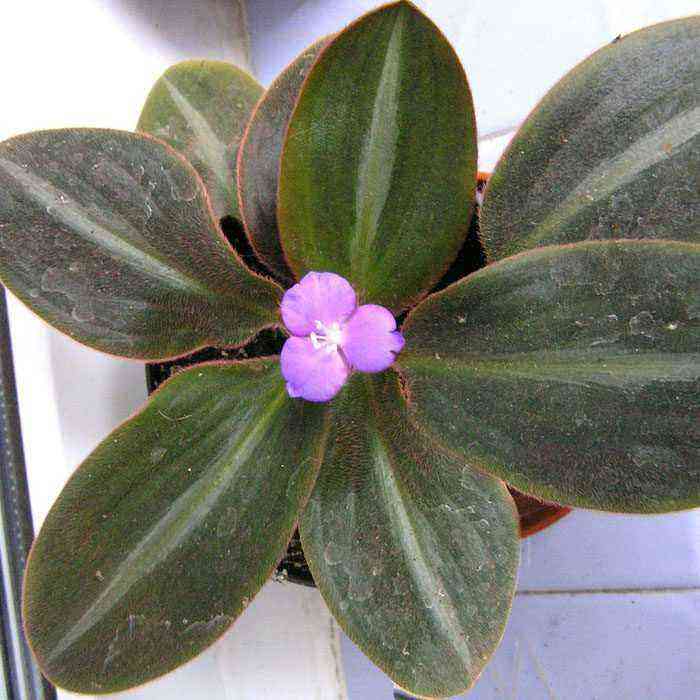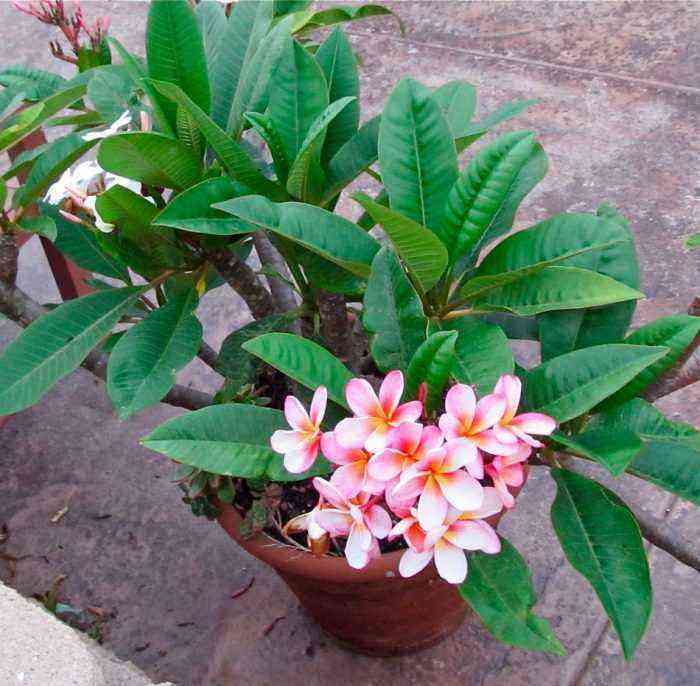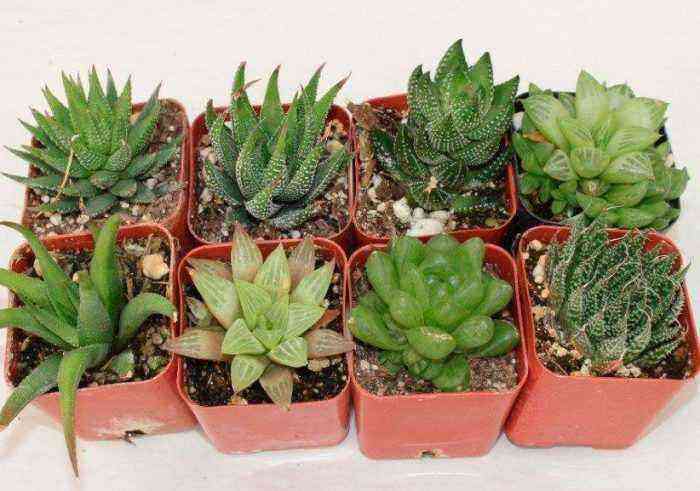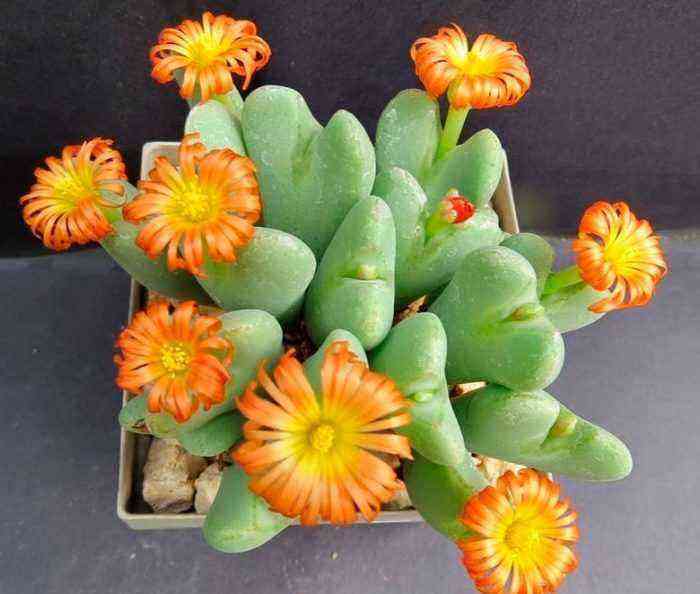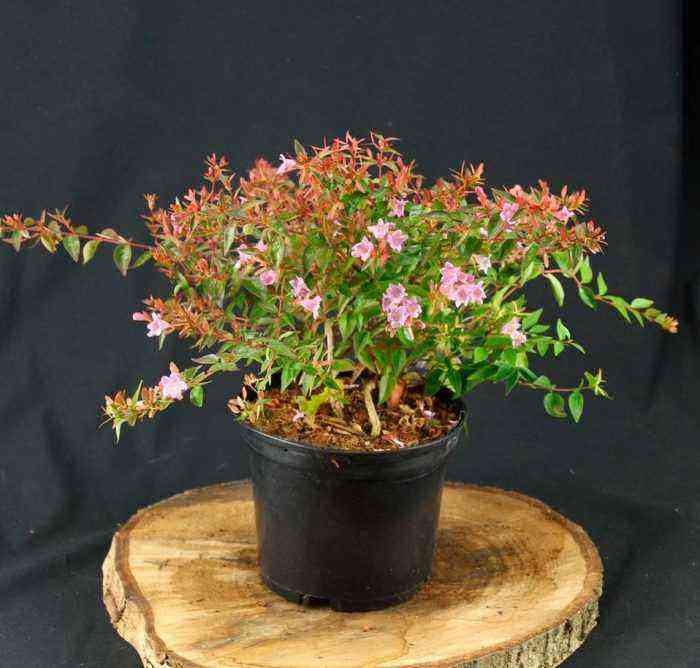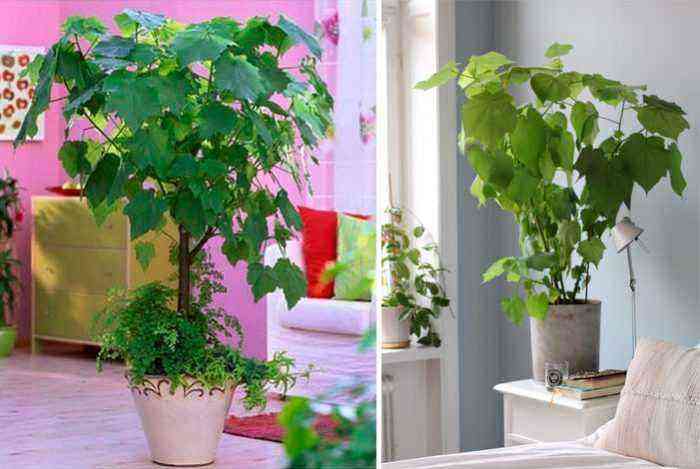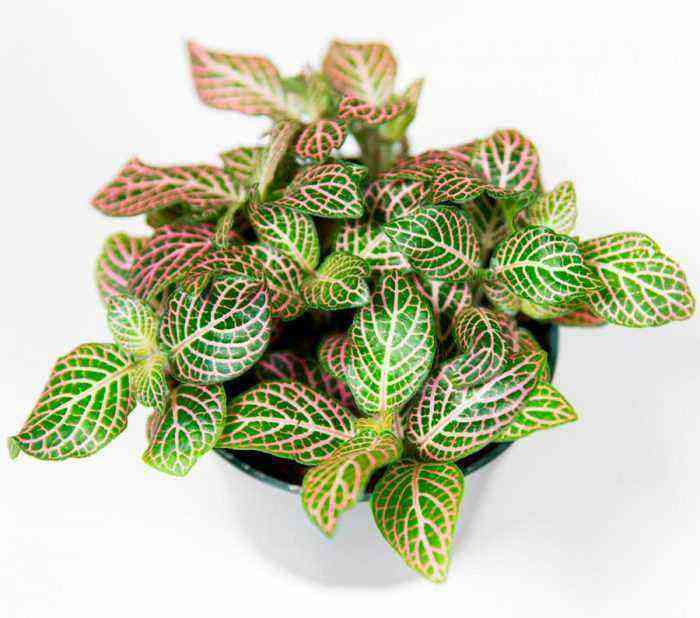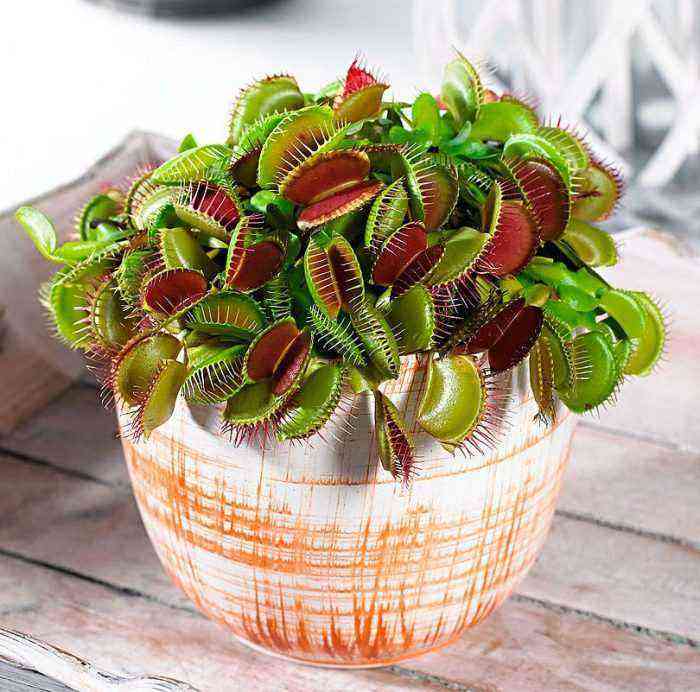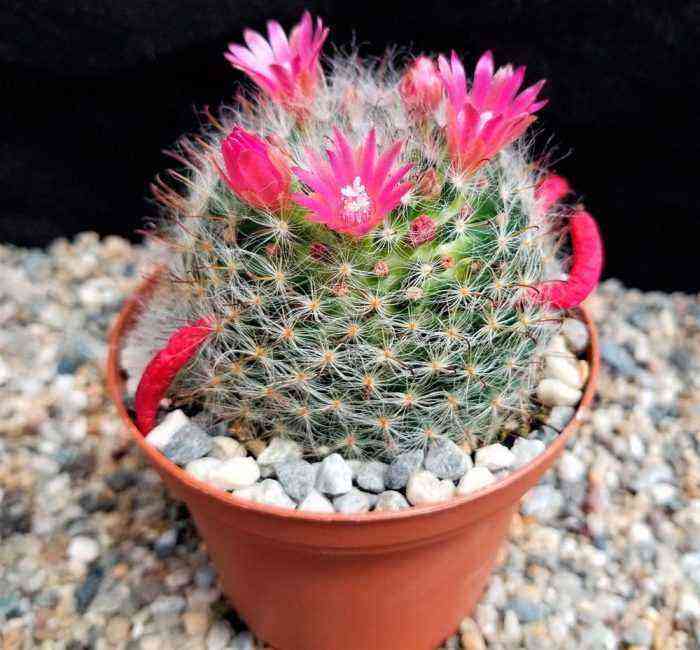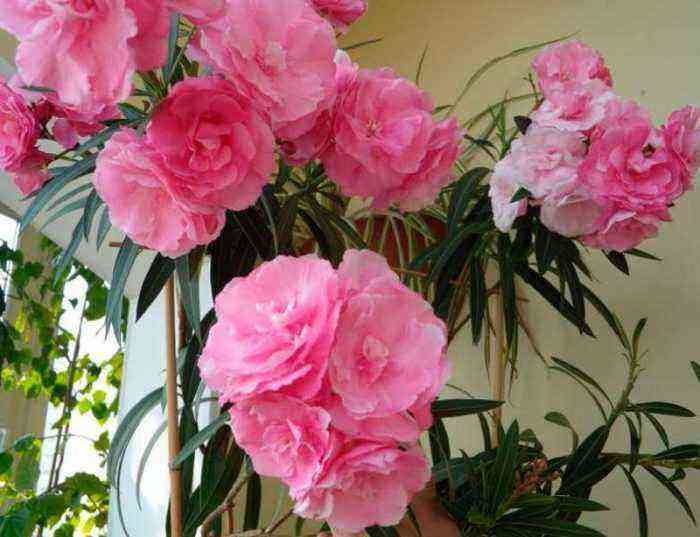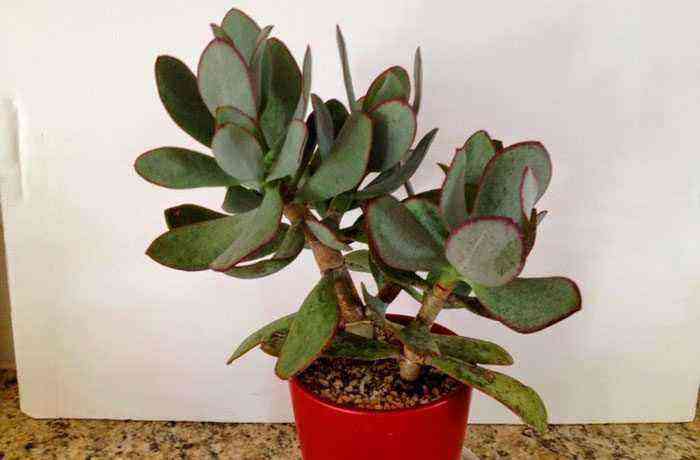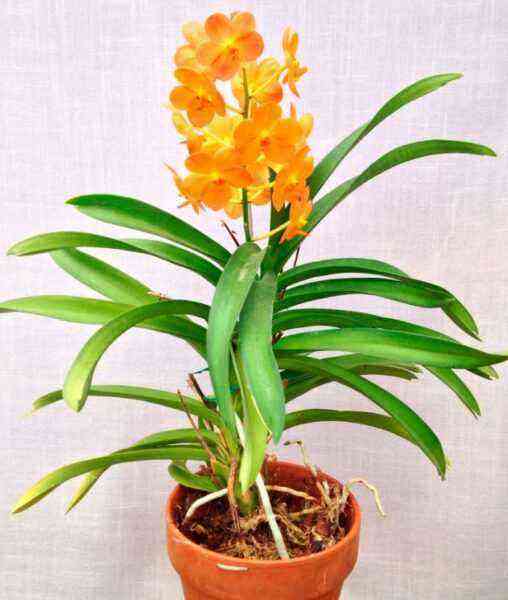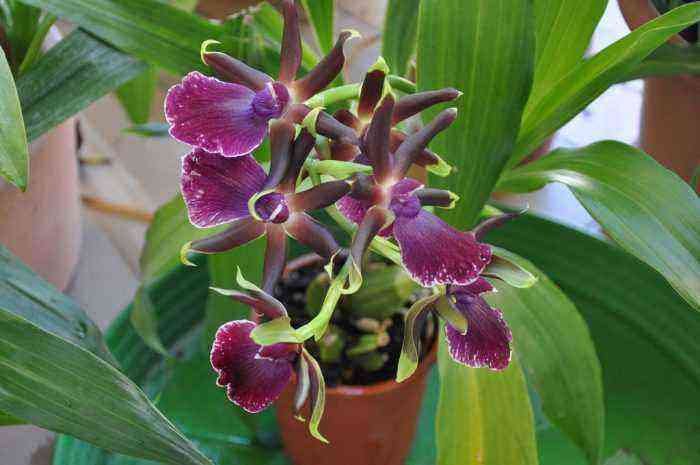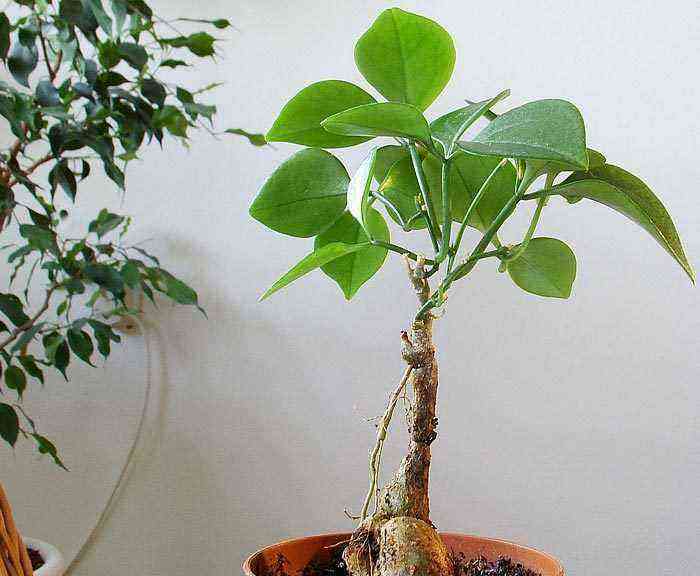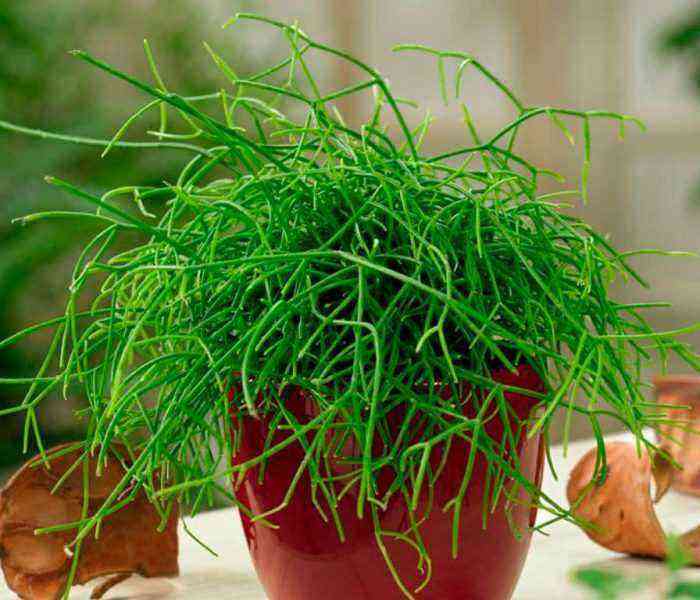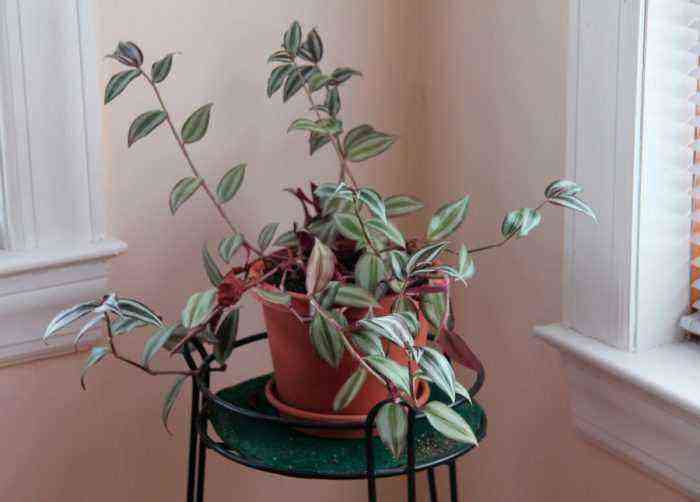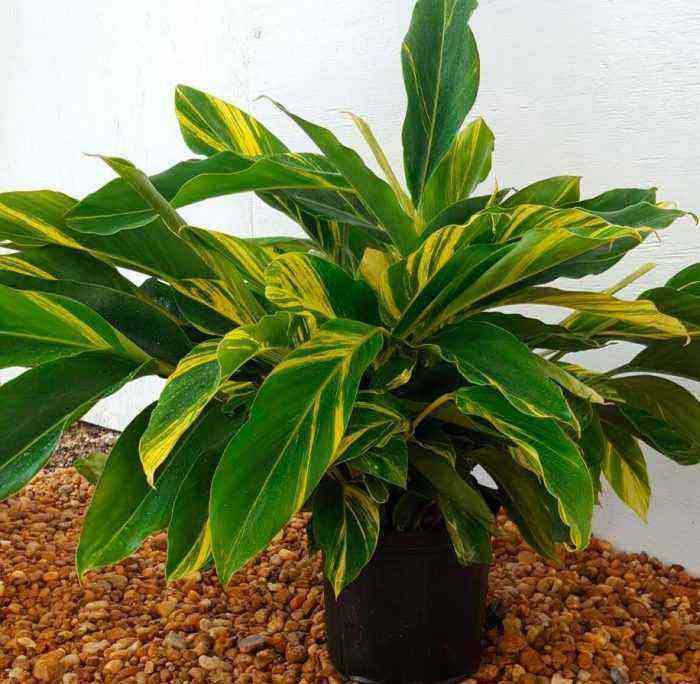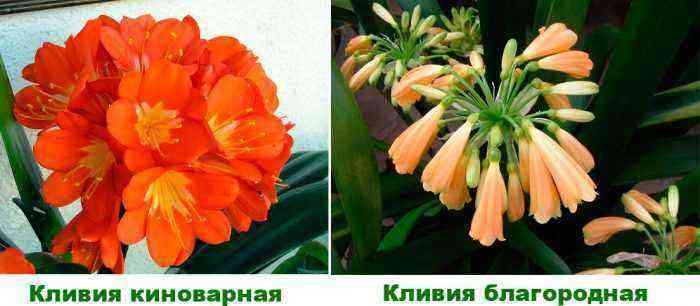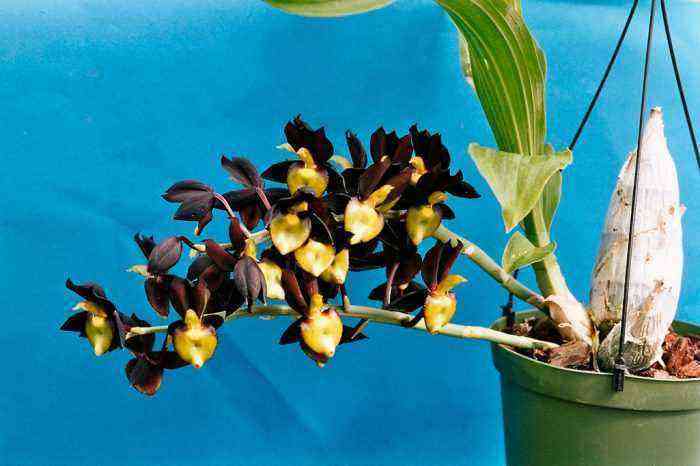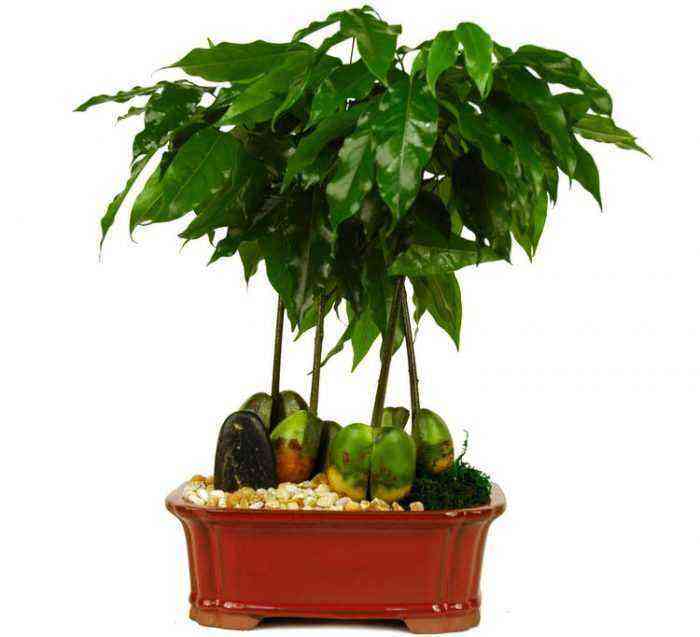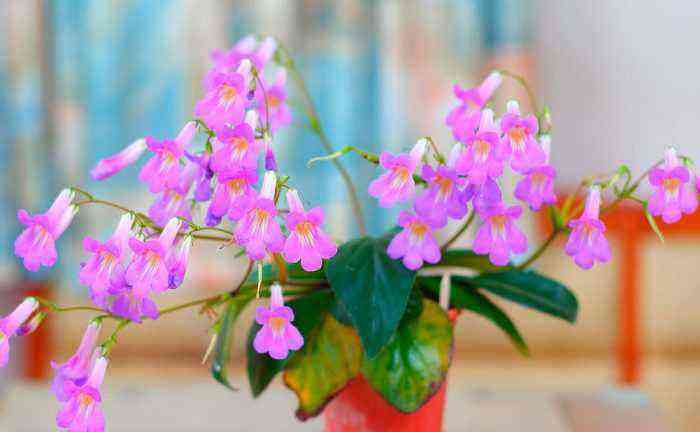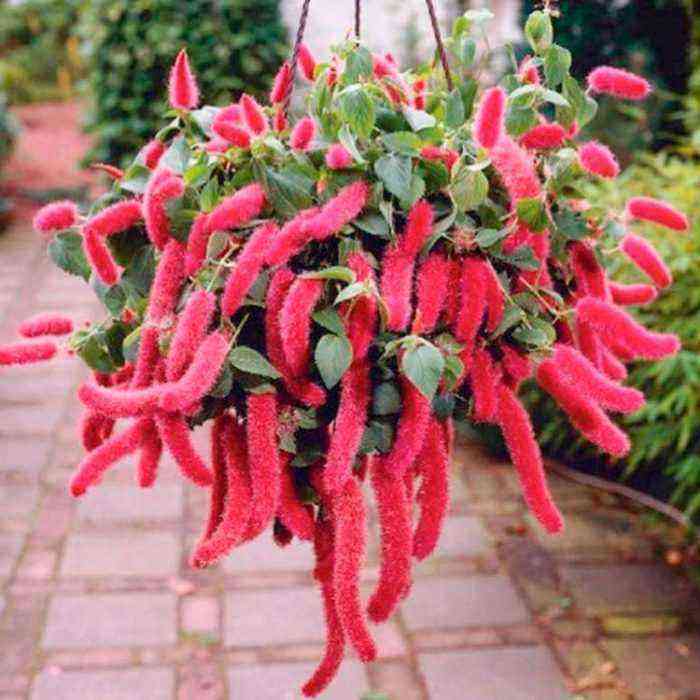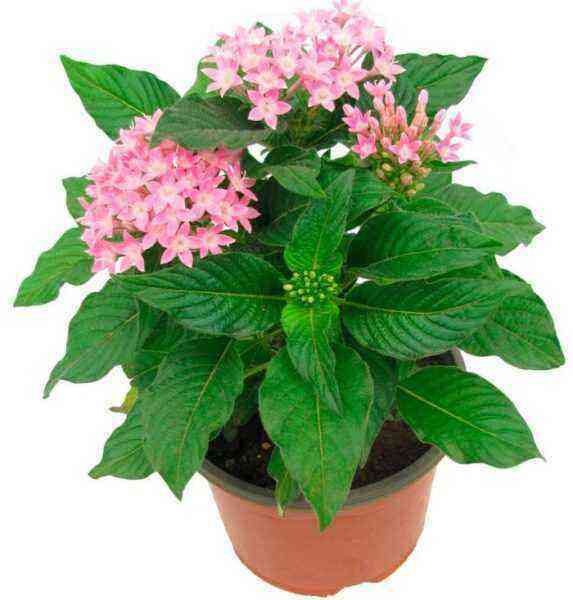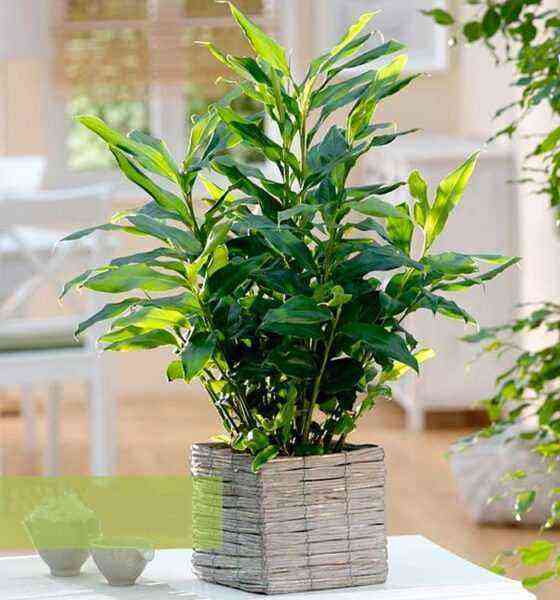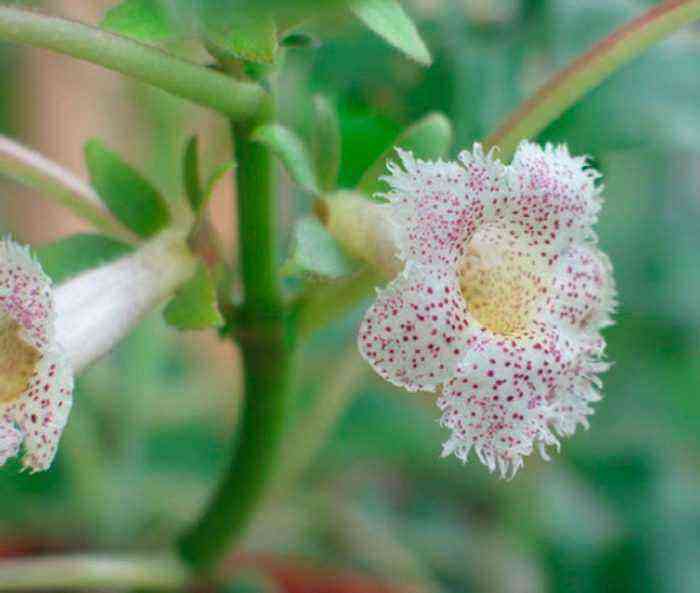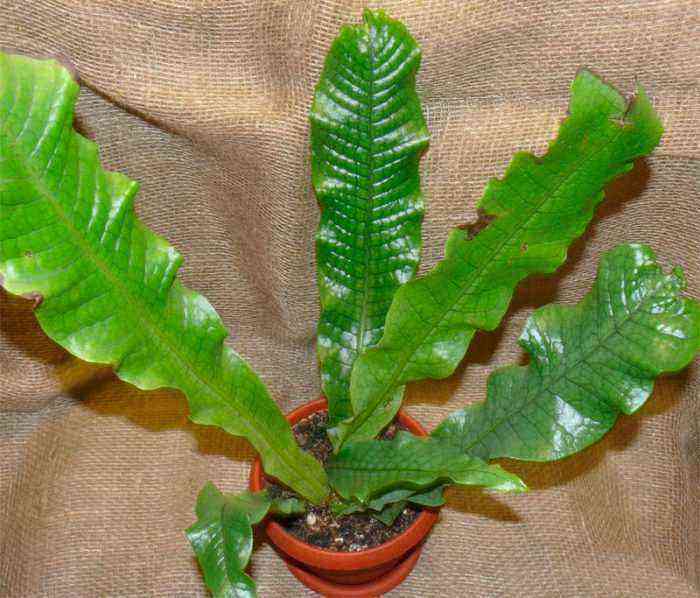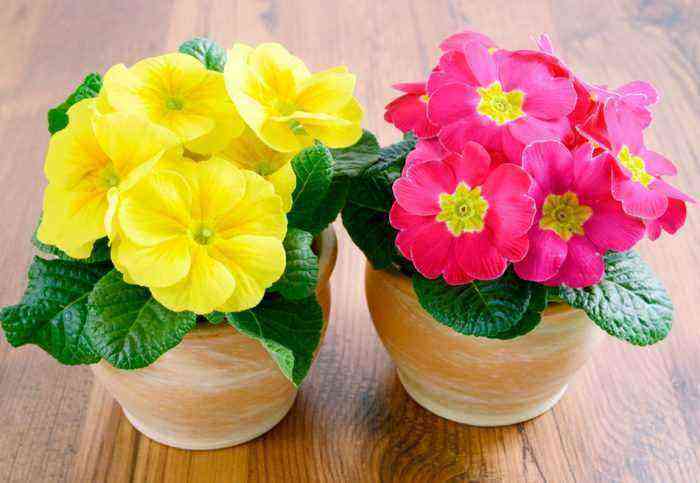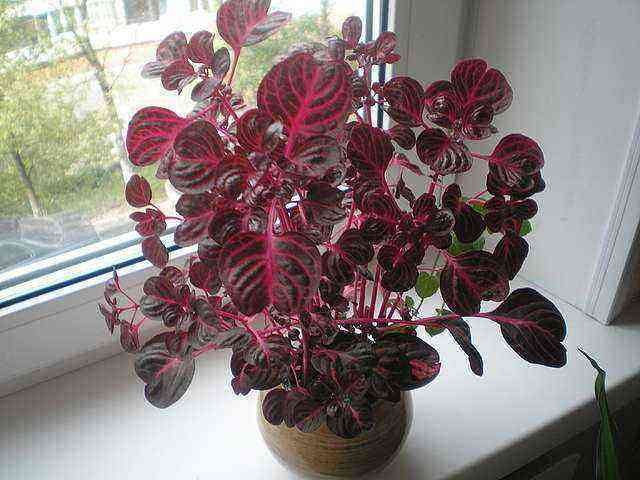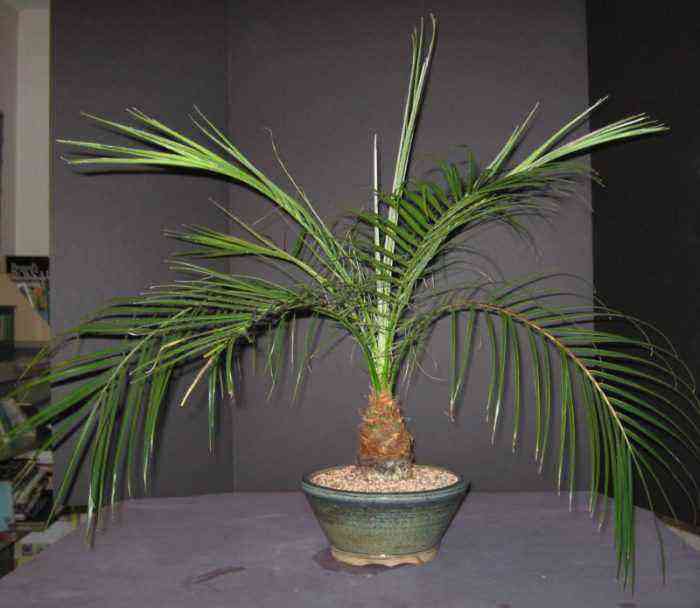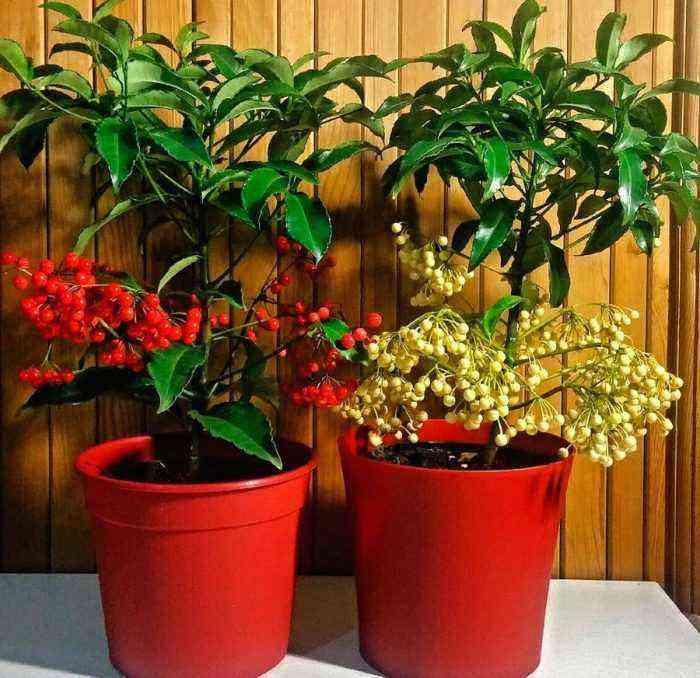The herbaceous perennial bulbous plant Ledebouria is considered a member of the Liliaceae family. It is distinguished by a rather high endurance, but despite this, in culture, in most cases it is grown at home. Ledeburia is native to South Africa, where it is found mainly in regions with tropical climates.
This plant has many varieties, but they all have long lily leaf plates. Each bush is decorated with a large number of dense leaf rosettes, while their color can be very different (depending on the variety): from emerald green to burgundy purple stripes and silvery-gray in spots of green to solid green.
During flowering, the bush is decorated with racemose inflorescences, which are located on high powerful peduncles. Each inflorescence consists of several dozen small bell-shaped flowers, which can be colored purple, pale green or deep pink.
Ledeburia is characterized by slow growth: within 1 year, 3 new leaf plates grow in it. Flowering begins in the last days of spring and lasts until the end of August. This perennial is undemanding and unpretentious, so even an inexperienced florist can easily grow it.
Brief description of cultivation
- Temperature… During the growing season – around 21 degrees, during the dormant period – about 14 degrees.
- Air humidity… The bush feels best in moderate humidity, but you can also grow it in a room with dry air.
- Illumination… Large amount of bright diffused light. Protection from direct sunlight is required.
- Watering… In the spring and summer, the soil mixture in the pot is moistened moderately (once every 1–5 days), and in winter this is rarely done (7 or 2 times during the month).
- Soil mixture… A commercial soil mixture for bulbous is suitable, you can also use a mixture of humus (peat), garden soil and perlite (sand), which are mixed in a 1: 1: 1 ratio.
- Fertilizer… During the growing season, once every 1 days, a complex mineral fertilizer is used for this, while taking ½ part of the dosage recommended by the manufacturer.
- Transfer… It is carried out only when it is really needed: the pot has become small for the bulb or the quality of the soil mixture has greatly deteriorated.
- Reproduction… Daughter bulbs or seed method.
- Hygiene… Old foliage must be cut off in time, and dirt and dust must be removed from the surface of young leafy leaves. In this case, the bush will always look neat and well-groomed.
Ledeburia care at home
Flowering
As a rule, indoor ledeburia begins to bloom in mid-April. From the centers of many small leafy rosettes, powerful long peduncles grow, on the tops of which inflorescences are formed in the shape of a brush. Each inflorescence contains a large number of small bell-shaped flowers, which, depending on the variety, can be pinkish-purple, pale green or purple.
Temperature
During the growing season, Ledeburia feels best at an air temperature of 18 to 20 degrees. Moreover, during the rest period, the air temperature should be within 14 degrees.
Make sure that the room is not too cold, as this can cause rot on the bulb and the death of the entire plant. The risk of bulb rotting increases with excessive watering.
Air humidity
Ledeburia grows well with moderate humidity in the room. However, dry indoor air will not harm her either. The plant responds perfectly to the moistening of leaves from a spray bottle; for this, clean water is used, the temperature of which is close to room temperature. Moisten the bush once every 1 days.
Illumination
In order for the color of the foliage to be saturated, and the flowering lush and systematic, the plant must receive a large amount of bright and diffused light. Remember to protect it from direct sunlight. For this flower, an eastern, southern or western window sill is best suited.
Watering Ledeburia
Particular attention should be paid to watering the ledeburia. In the warm season, the soil mixture in the pot should be moistened moderately (about once every 1-5 days), while between waterings it should have time to dry out. In winter, the plant should be watered more rarely (once every 7–1 days).
Remember that watering the flower too abundantly or often cannot be done in winter or summer, as this can cause rot on the bulbs.
Pot selection
For home ledeburia, a large, wide pot with drainage holes at the bottom is best. They will help to avoid stagnation of liquid in the soil mixture.
Substrate
This flower feels great in a purchased potting soil mixture for bulbous plants. If you wish, you can prepare the substrate with your own hands, for this you need to combine perlite (river sand), humus (leafy soil or peat) and garden soil. All components are taken in equal parts. Remember that the substrate must be loose and well-drained.
Fertilizer
Often it is not necessary to feed ledeburia growing in indoor conditions. Top dressing is carried out only during the growing season with a frequency of 1 every 4 weeks. For this, any liquid mineral complex fertilizer for flowering plants is suitable, and you need to use ½ the dosage indicated on the package.
Ledeburia transplant
Transplant a flower only when it is really necessary. For example, with an excessive deterioration in the quality of the soil mixture or if the root system has ceased to fit into the pot. As a rule, the plant is transplanted once every three years, while adult bushes are subjected to this procedure even less often.
Please note that when planting the bulbs in a new container, it is forbidden to burrow it completely into the substrate. This can lead to the appearance of rot on it, as a result of which the ledeburia may die.
Methods of reproduction
Cultivation from seeds
Indoor Ledeburia can be grown from seeds if desired. They are sown in a mixture of sand and peat in early spring. In this case, the seeds are simply spread over the surface of the substrate, without falling asleep from above and without deepening. From above, the container should be covered with a transparent film or glass. When sowing fresh seed, the first seedlings should appear after 2-3 weeks. Remember that seeds lose their germination rather quickly, so if they are old, then it is better not to sow them.
Seedlings are characterized by slow growth, therefore, their picking in separate small pots is carried out only after 4-8 weeks.
Reproduction by daughter bulbs
The parent bush forms a large number of daughter bulbs during active growth. During transplantation, the bulbs can be separated from the mother plant, after which they are planted in separate small pots. Bulbs should be buried only ½ part into the substrate. In case of successful rooting of the bulbs, young leaf plates should appear on them after 15–20 days.
Possible problems
With ledeburia, problems can arise only if you regularly make mistakes in care. Most often, the plant has the following problems:
- The foliage has lost its bright color and spotting… The flower feels an acute lack of light. To remedy the situation, it is enough to rearrange the bush in a well-lit place.
- No blooming even in good light… In order for the formation of flower buds to be successful, Ledeburia must receive a sufficient amount of bright diffused light from the sun every day.
- Brown specks appeared on the leaf plates… They appear when exposed to direct sunlight and are burns. Do not forget to protect the bush from the scorching sun rays on particularly hot summer days.
- Rot has appeared on the bulbs… This happens if the plant is in a cool place and is watered too abundantly. The decayed areas are cut out, the bulbs are dried, and then they are treated with a fungicide. Plant the bush in fresh substrate.
- vermin… This plant is quite resistant to pest infestation, however, it can sometimes be harmed by mealybugs, scale insects and spider mites. To destroy them, use suitable acaricides or insecticides.
Types of ledeburia with a photo
This compact flower has lush rosettes consisting of fleshy and long leaf plates. The leaves are painted in green-silver color, and they are decorated with a large number of dark green specks of various shapes. On tall, strong peduncles, inflorescences are formed, consisting of several dozen pale green small, star-shaped flowers.
Ledeburia pauciflora
The foliage of this undersized plant is wide and elongated, and it is painted greenish. There are a large number of dark green spots on its surface. Brush-shaped inflorescences rise on powerful long peduncles. The petals of the small flowers are deep purple in color, while they are surrounded by green sepals.
Ledeburia Cooper (Ledebouria cooperi)
It is a semi-leafy miniature variety. Erect leaf plates are painted in a greenish-emerald hue, and are decorated with thin purple stripes that run along the entire length of the leaf. The lush inflorescences include a large number of rich pink small flowers with long stamens of a yellow-lemon hue.
